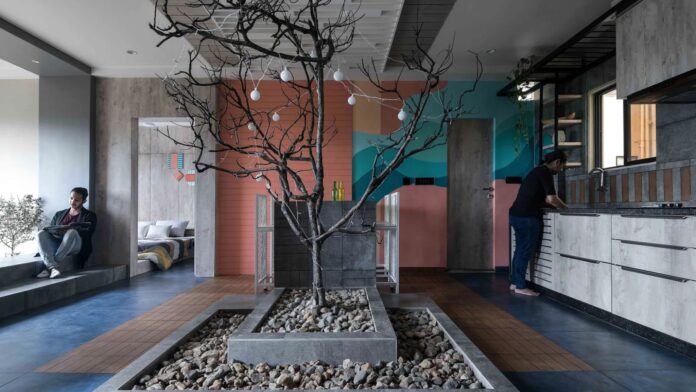The arrangement of furniture and elements within a space is an art that can dramatically impact its functionality and aesthetic appeal. Whether you find yourself settling into a fresh dwelling, giving your current space a makeover, or simply enhancing the ambiance of a solitary room, the utilization of a layout planner can emerge as your hidden ally in sculpting a well-balanced and aesthetically gratifying atmosphere. Within the pages of this comprehensive manual, we’re set to guide you through the complexities of harnessing a layout planner with finesse, bestowing upon you the empowerment to confidently metamorphose your spaces.
- Understanding the Power of Layout Planning
At its core, layout planning involves strategically arranging furniture, decor, and functional elements within a room to optimize both its use and its visual appeal. This process goes beyond mere aesthetics, delving into the realm of functionality, traffic flow, and even energy flow in the space.
- Assessing Your Space
Begin by taking measurements of the room you’re working with. Note the dimensions of walls, doorways, windows, and any architectural features. Understanding the physical boundaries of your space is vital for creating an accurate layout plan.
- Defining Zones
For larger spaces, consider dividing the area into distinct zones based on their intended functions. These zones could include areas for dining, lounging, working, or entertainment. Each zone’s purpose will guide the selection and placement of furniture and decor.
- Prioritizing Functionality
When arranging furniture, prioritize functionality. Imagine how people will move through the space and ensure that pathways are clear and unobstructed. Furniture should facilitate ease of movement and usability.
Read more.. 10 Inventive Home-Based Startups Altering Our Residing Spaces
- Playing with Proportions
The scale of furniture in relation to the size of the room matters. Mix and match different sizes to add depth and visual interest. However, be cautious not to overcrowd or overwhelm the space with overly large pieces.
- Focal Points and Balance
Identify focal points within the room, such as a fireplace, a stunning window view, or a statement piece of furniture. Build your layout around these focal points, aiming for a balanced distribution of visual weight.
Read more.. The Effect of 3D Printing Innovation on Auto Assembling Cycles
- Experimenting with Arrangements
A layout planner provides the advantage of experimentation without physically moving heavy furniture around. Try multiple arrangements by dragging and dropping elements in your planner until you find the most appealing and functional setup.
- Maximizing Natural Light
Position furniture in a way that capitalizes on natural light. Placing seating areas near windows and avoiding blocking sources of light can create an inviting and airy atmosphere.
- Considering Traffic Flow
Ensure that there’s ample room for people to move comfortably through the space. Avoid obstructing walkways and doorways, and maintain clear paths between furniture pieces.
- Finalizing Your Plan
Once you’ve arrived at a layout that aligns with your vision and needs, take a moment to review it. Consider factors like convenience, aesthetics, and practicality. This is also an excellent time to make any adjustments before bringing your plan to life.
In Conclusion
Using a layout planner is a strategic approach to space design that allows you to visualize various configurations before committing to physical changes. By embracing the principles of functionality, aesthetics, and balance, you can create rooms that seamlessly blend style with usability. Remember, the key to successful layout planning lies in experimentation and adaptation—crafting spaces that truly resonate with your lifestyle and preferences.
Read more.. Elevate Your Haven: Crafting a Luxurious Bedroom Retreat with Simple Interior Design





